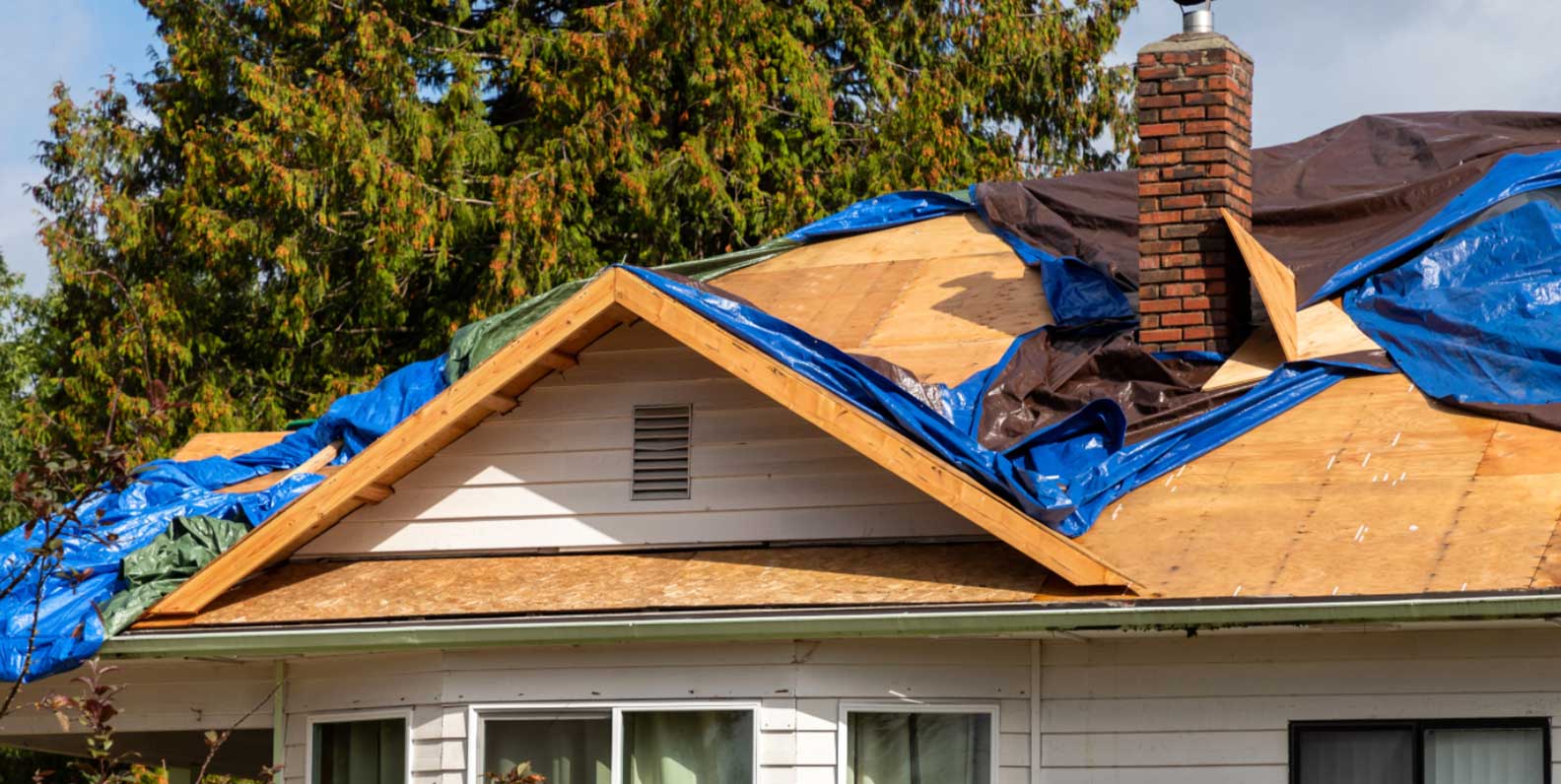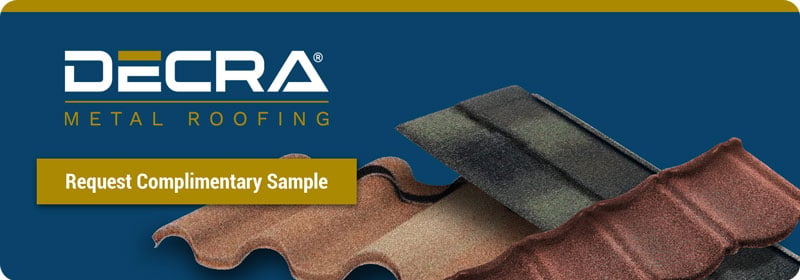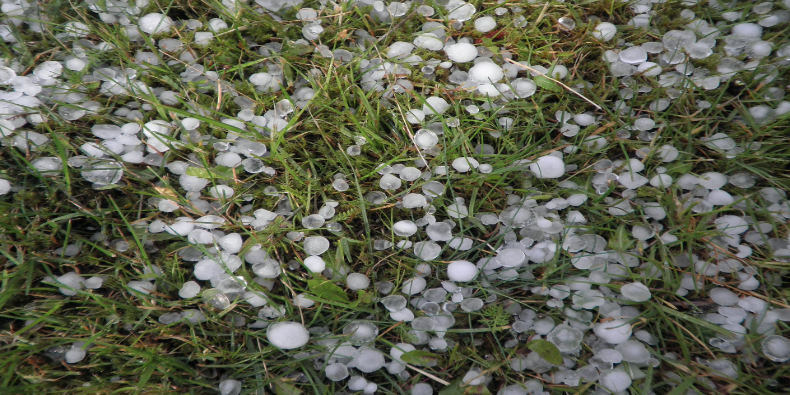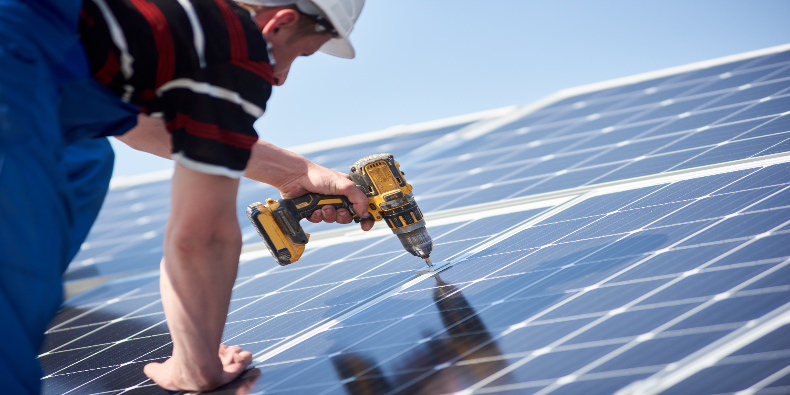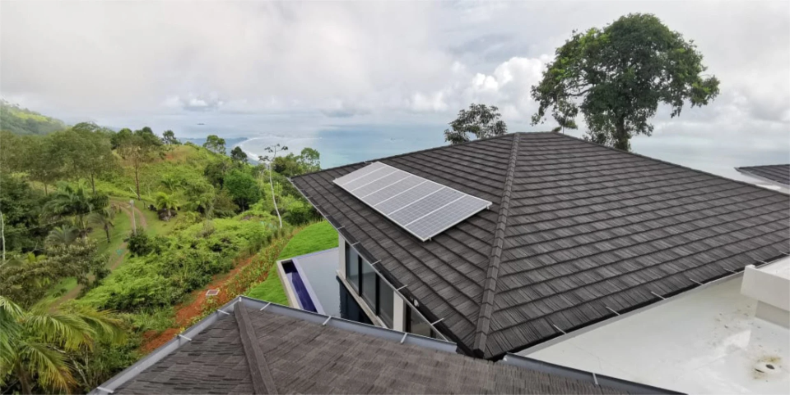Your roof was damaged by a storm–now what?
After storm damage, homeowners often find themselves with two choices:
- Stick with the same roofing material for repairs or replacements.
- Upgrade to a more durable, weather-resistant roofing solution.
Homeowners are increasingly opting for the latter, choosing impact-resistant metal roofing that offers superior protection and peace of mind against future storm damage.
Keep reading to learn why upgrading to a metal roof after storm damage is becoming the go-to choice for residential roofing, including:
- Influence of Rising Insurance Premiums
- Recent Legislation Aimed at Improving Building Safety
- Additional Benefits of Metal Roofing
Influence of Rising Insurance Premiums
Home insurance premiums in the U.S. have been increasing significantly due to several factors:
- Severe Weather Events: The increase in severe weather events such as hurricanes, tornadoes, and wildfires, has increased the risk of property damage.
- Inflation and Rising Costs: Inflation and higher homebuilding costs have further driven up insurance premiums.
According to Insurify, the average annual home insurance premium is projected to rise by 6% in 2024, reaching $2,522. This follows a nearly 20% increase between 2021 and 2023. States prone to severe weather, like Florida, Louisiana, and Texas, are experiencing even steeper hikes, with premiums in some areas of South Florida exceeding $11,000 annually.
Insurance companies often view metal roofs as a lower risk due to their durability and longevity.
Metal roofs can last 40-70 years, significantly longer than traditional asphalt shingles, which need to be replaced as often as every 12-20 years. Metal roofs are also highly resistant to extreme weather conditions, including high winds, fire, heavy snow, and hail.
As a result, many insurers are offering significant discounts on premiums for homes with metal roofs. These discounts can be as high as 35%, depending on the insurer and specific policy terms.
Other factors, such as recent legislation in Florida, are causing a surge in demand for metal roofing.
Recent Legislation Aimed at Improving Building Safety
Florida's HB 1021, effective July 1, 2024, introduced several measures aimed at improving building safety and management, particularly for condominium associations. Key provisions include:
- Regular inspections to ensure building safety and structural integrity.
- Enhanced requirements for hurricane protection installations.
- Stricter financial reporting and transparency requirements for condominium boards.
These legislative changes aim to reduce the risk of property damage and improve overall building safety.
As other states observe the effectiveness of Florida's legislation in managing insurance costs and improving building durability, they may implement comparable laws to address rising insurance premiums and severe weather risks.
Given the rising insurance premiums and the enhanced safety requirements introduced by legislation like Florida's HB 1021, metal roofing offers a compelling option for homeowners nationwide.
Keep in mind that durability and longevity are just two examples of the long-term value a metal roof can provide.
Additional Benefits of Metal Roofing
Energy Efficiency
Metal roofs are highly energy-efficient due to their ability to reflect solar heat rather than absorbing it. This reflectivity can reduce cooling costs by up to 40%, making homes significantly cooler during the summer months. This energy efficiency stems from three main properties:
- Reflectivity refers to the roof's ability to reflect solar energy away from the building. Metal roofs are highly reflective, capable of reflecting up to 70% of the sun's energy. This minimizes heat absorption, keeping the roof surface cooler and reducing the amount of heat transferred into the home. This property is particularly beneficial in warm climates, where it can lead to significant reductions in cooling costs, potentially saving homeowners up to 40% on energy expenses.
- Thermal emittance is the ability of the roof material to release absorbed heat. Metal roofs have high thermal emittance, meaning they can efficiently emit the heat they absorb back into the atmosphere.
- Emissivity measures how well the roof can release this absorbed heat. Metals' unique atomic structure, with free-flowing electrons, allows them to quickly spread and emit heat, preventing it from being transferred into the home. This property helps maintain a cooler indoor environment, reducing the need for air conditioning.
Solar Compatability
Metal roofs are particularly compatible with solar panel installations due to their:
- Longevity: Metal roofs often last 40-70 years, outlasting the typical 25-year lifespan of solar panels. This ensures that homeowners do not need to replace the roof before the panels.
- Increased Efficiency: Metal roofs' reflective properties help keep solar panels cooler, which can enhance their efficiency and longevity.
Environmental Impact
Metal roofs are an environmentally friendly option due to their sustainability and recyclability:
- Recycled Content: Metal roofs are often made from 25-95% recycled materials, significantly reducing the use of non-renewable resources.
- Recyclability: At the end of their long lifespan, metal roofs are 100% recyclable, unlike asphalt shingles, which contribute to landfill waste.
- Reduced Waste: The longevity of metal roofs means fewer replacements and less waste over time, contributing to a smaller environmental footprint.
Aesthetic and Structural Benefits
Metal roofs offer a range of aesthetic and structural advantages:
- Variety of Styles and Colors: Metal roofs, particularly stone-coated metal roofs, come in numerous styles and colors that align perfectly with the architectural and aesthetic requirements of residential roofing.
- Lightweight: Metal roofs are one of the most lightweight roofing materials, which helps preserve structural integrity and add reinforcing sheer strength to the building.
The Industrial Strength and Residential Style of DECRA Metal Roofing
If you’re looking for the industrial strength of metal roofing without the industrial aesthetics, you’re looking for a DECRA roof.
DECRA Metal Roofing products have the highest possible UL 2218 Class 4 Impact Resistant rating and all of our products have been rigorously tested to comply with high-velocity hurricane zone requirements, including Miami-Dade, Florida.
We take quality so seriously that we go above and beyond the required testing and conduct additional testing through an independent third-party lab for 13 physical properties, including:
- Material Thickness: Impact resistance and shear strength.
- Aluminum-Zinc Alloy Thickness: Strength, bending, and anti-corrosion.
- Coating Quality: Quality for exterior exposure and weather durability.
- Coating Thickness: Adequate protective thickness for weather durability and thermal performance.
- Humidity Resistance: Tests for water damage resistance to detect deficiencies in coatings.
- Salt Spray Resistance: Resist metal corrosion in the harshest environment.
Our stone-coated metal roofs blend the toughness of steel with the stylish look of traditional materials like asphalt shingles, clay tiles, and wood shakes. This delivers everything homeowners crave in a residential roofing solution: industrial-strength durability, long-lasting performance, and head-turning curb appeal.
See and feel the DECRA difference today, and order a complimentary sample.
Editor's Note: This blog was originally published in May 2021, but has been updated with relevant information.

